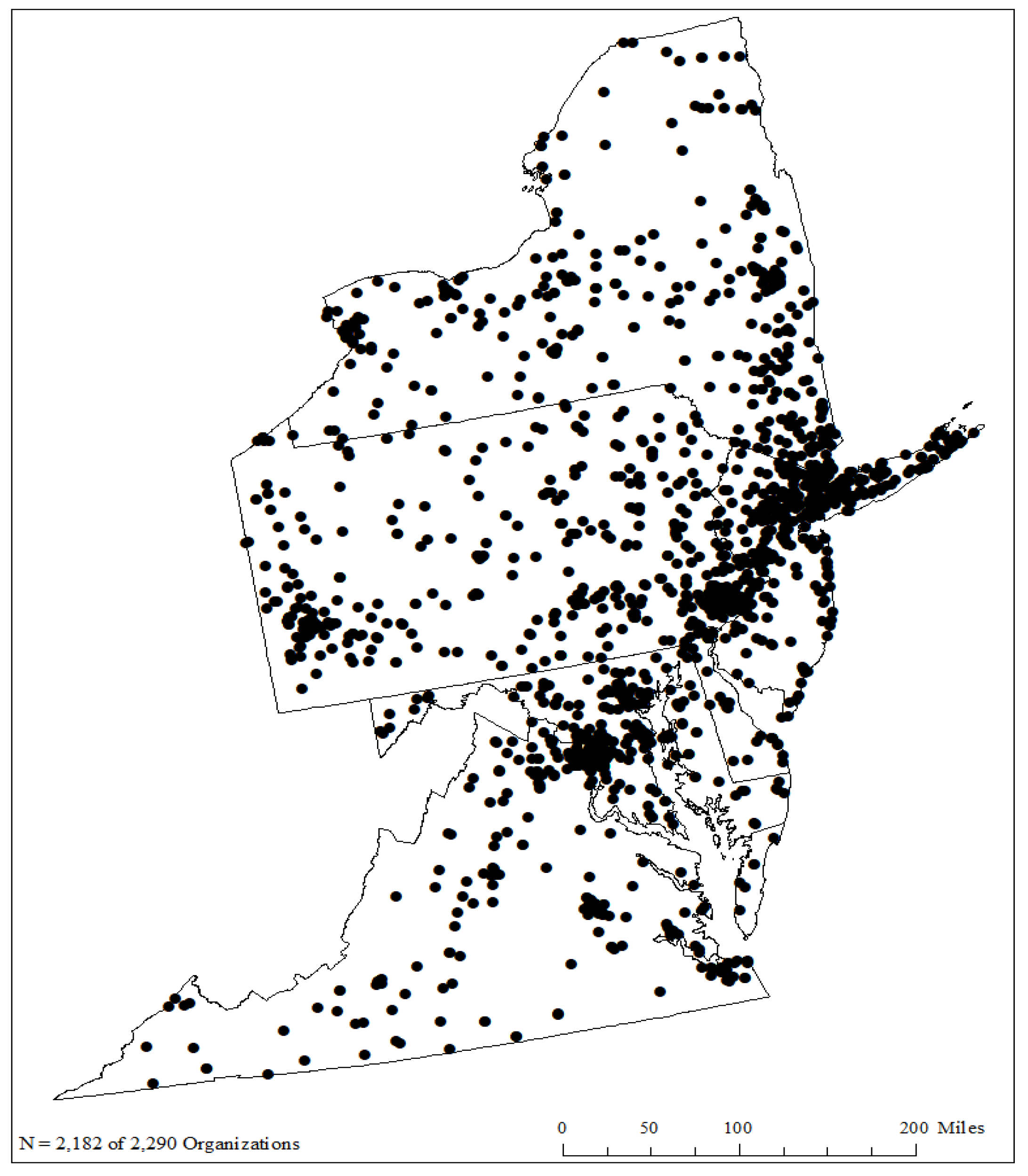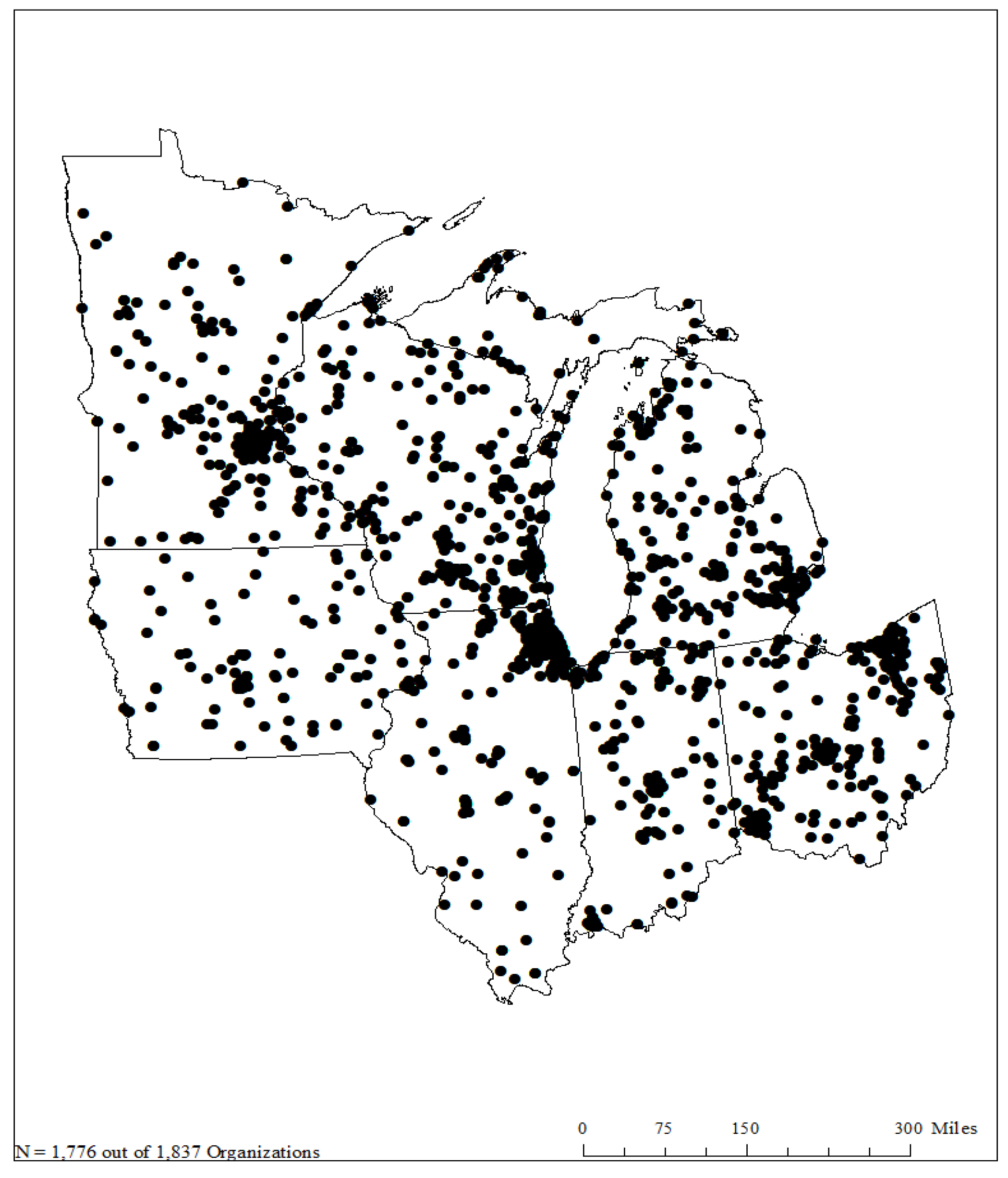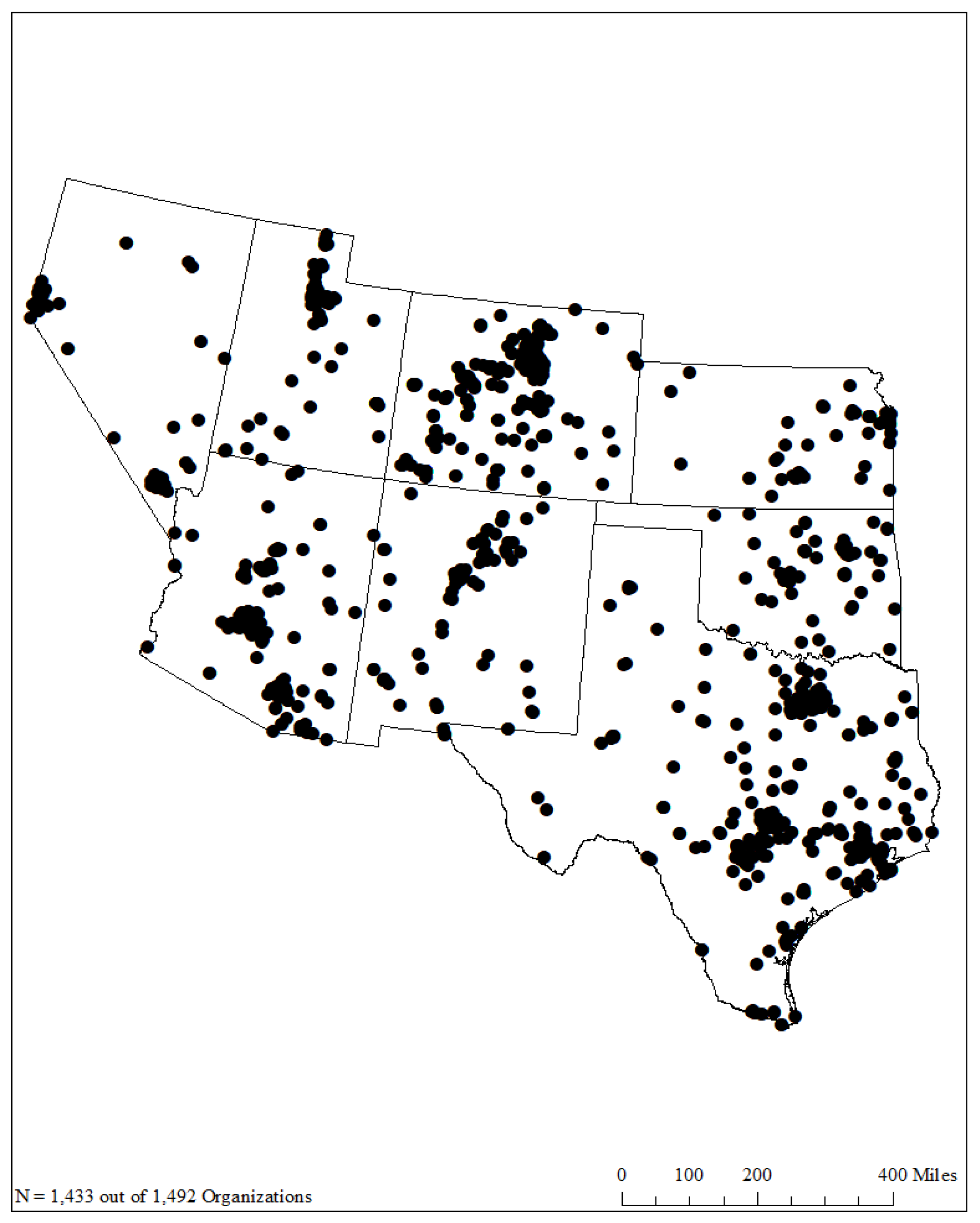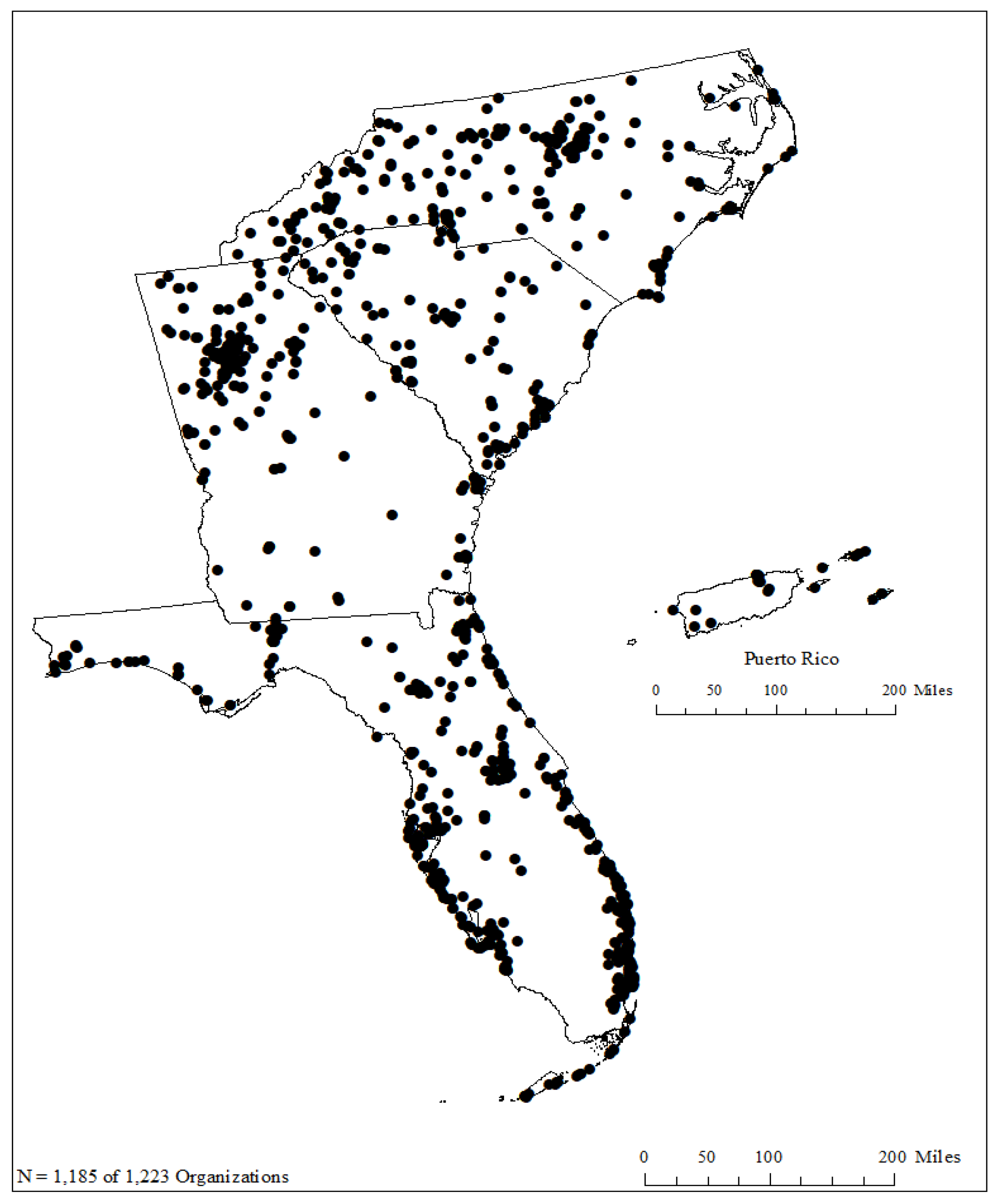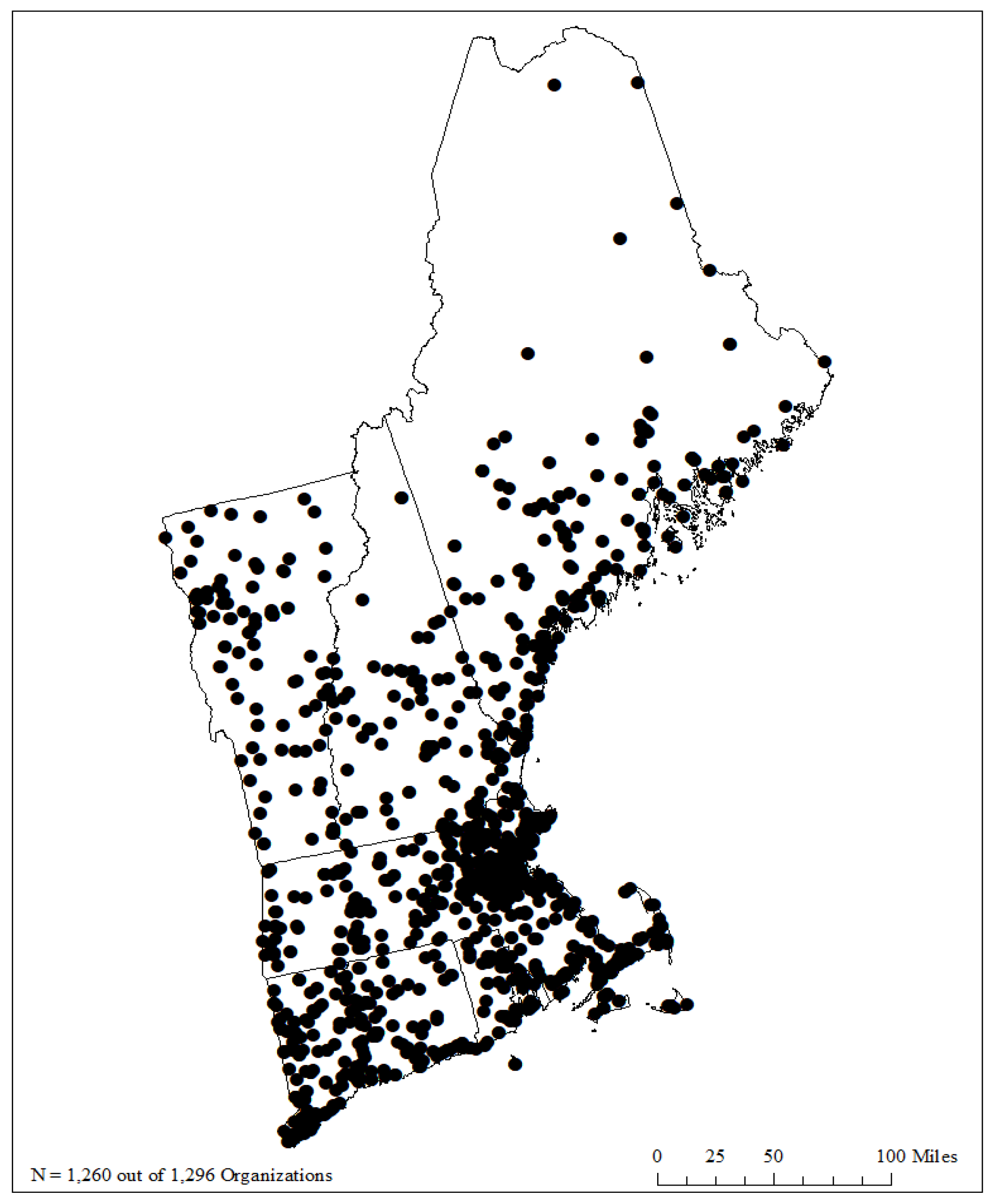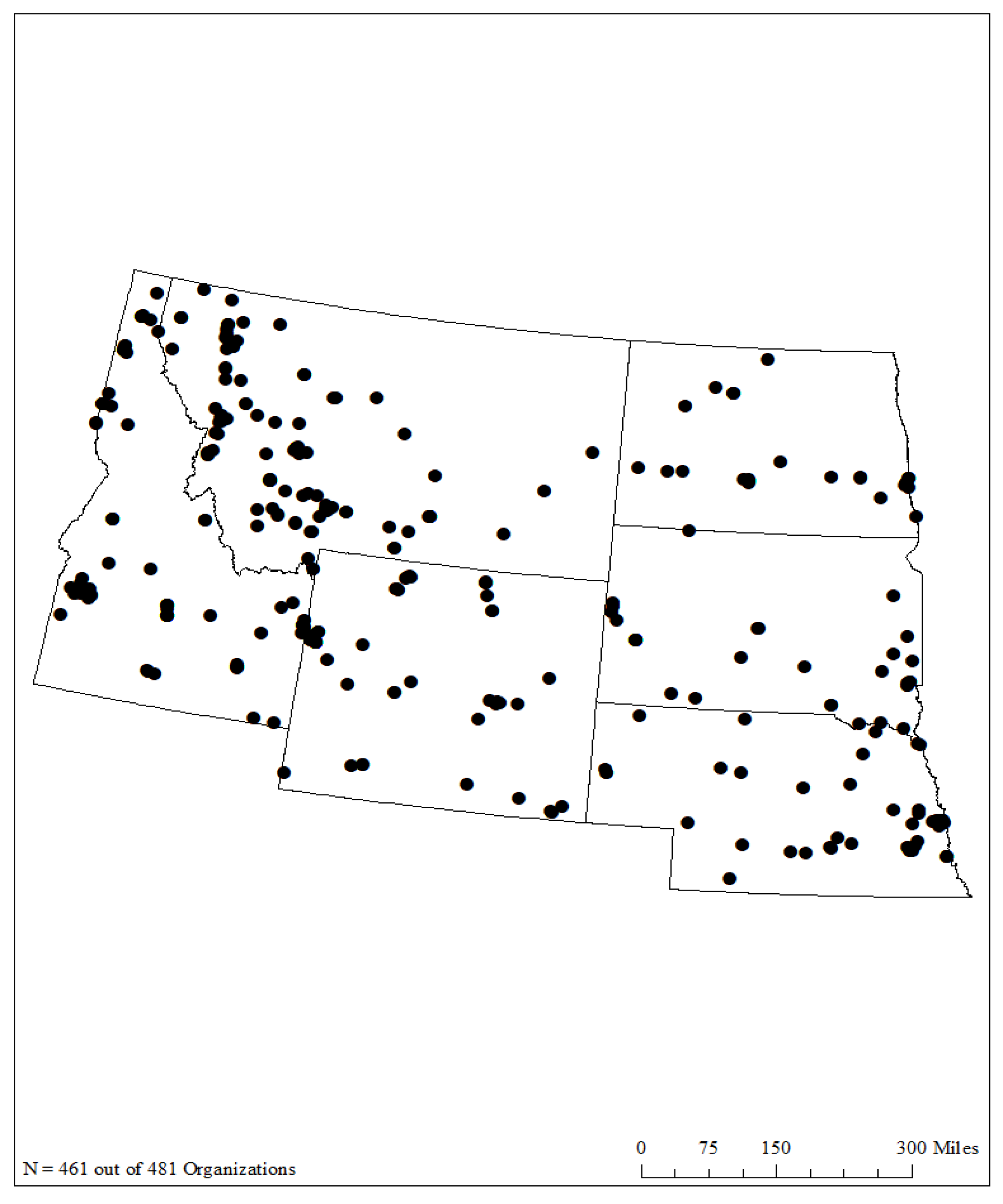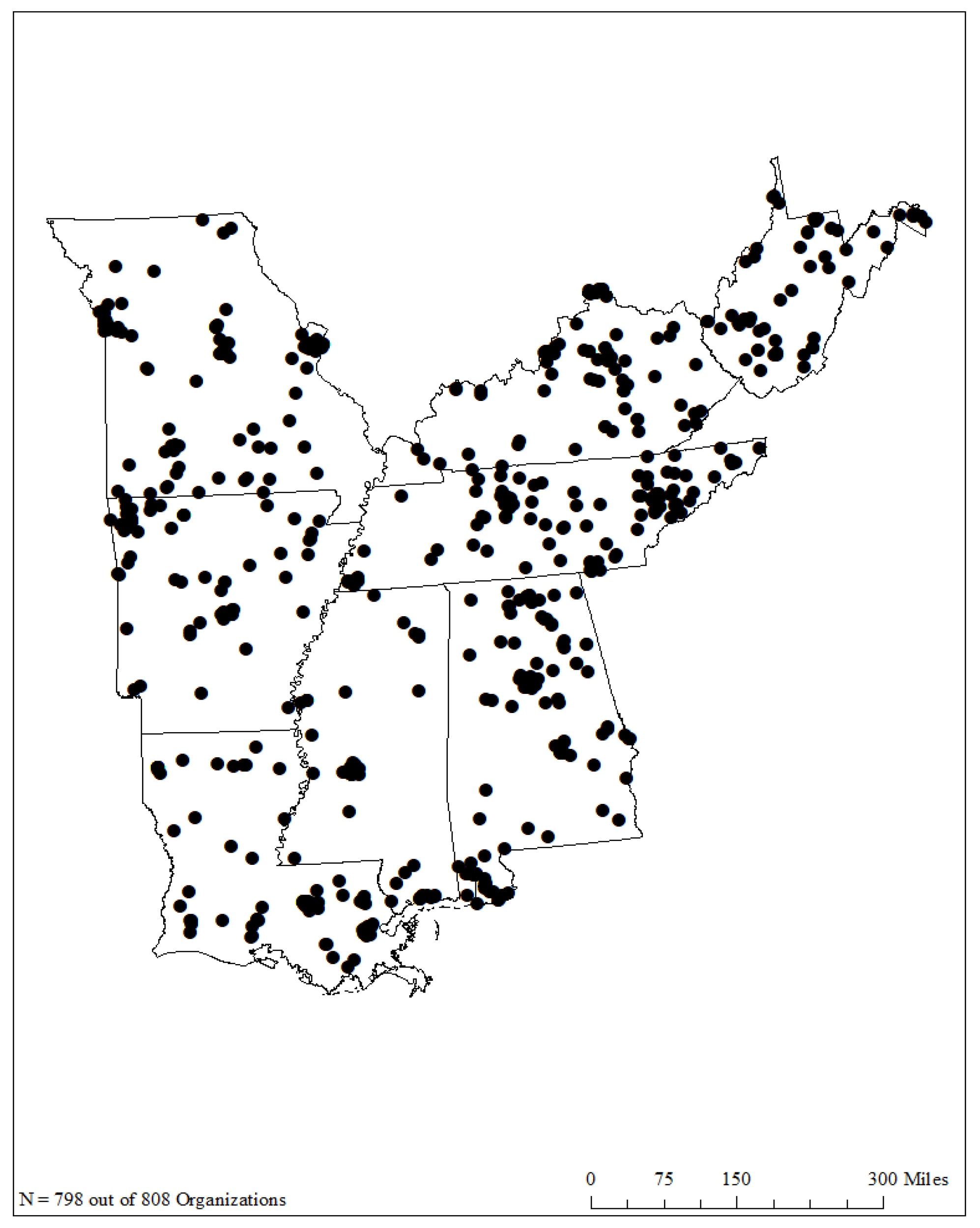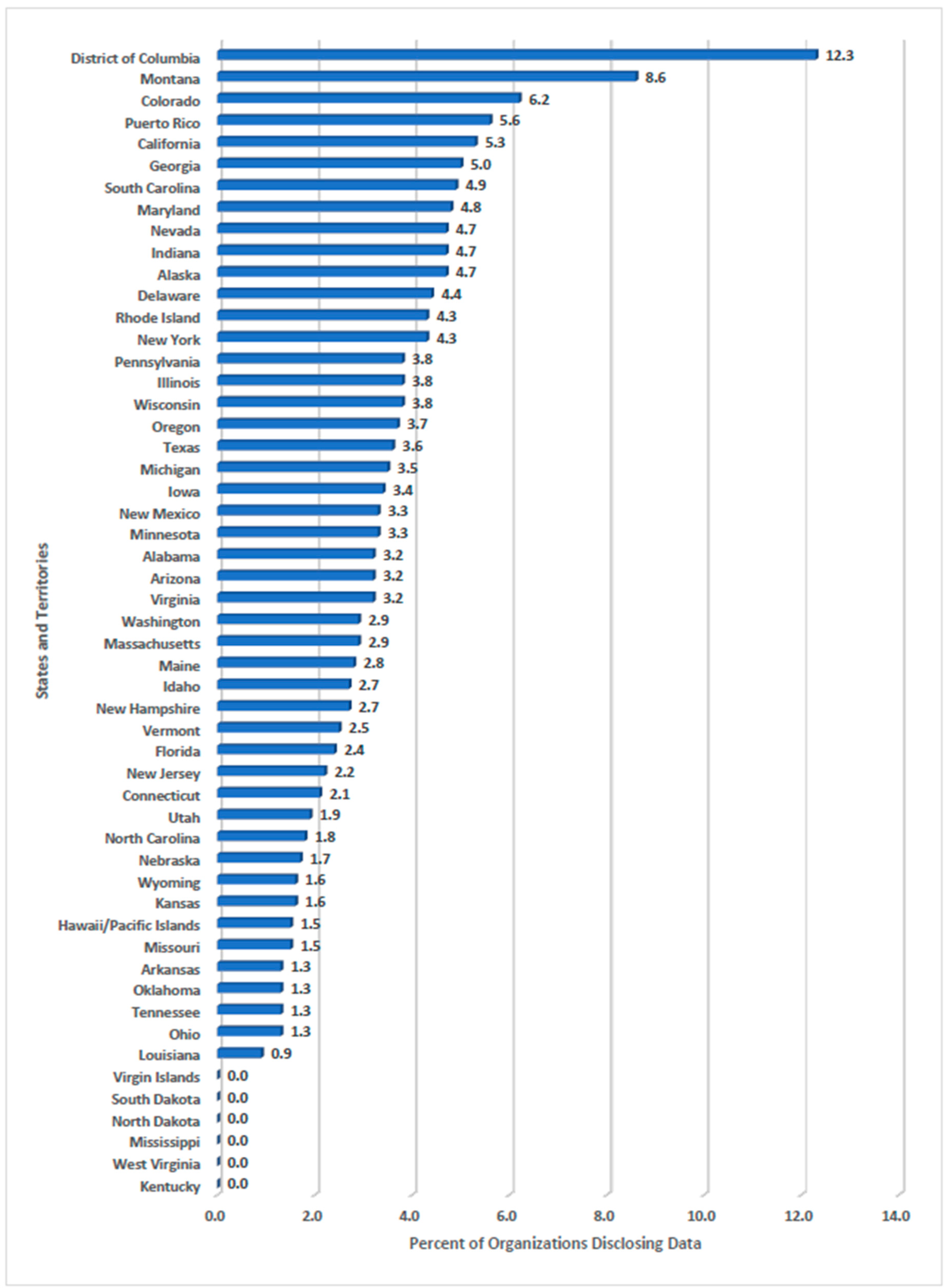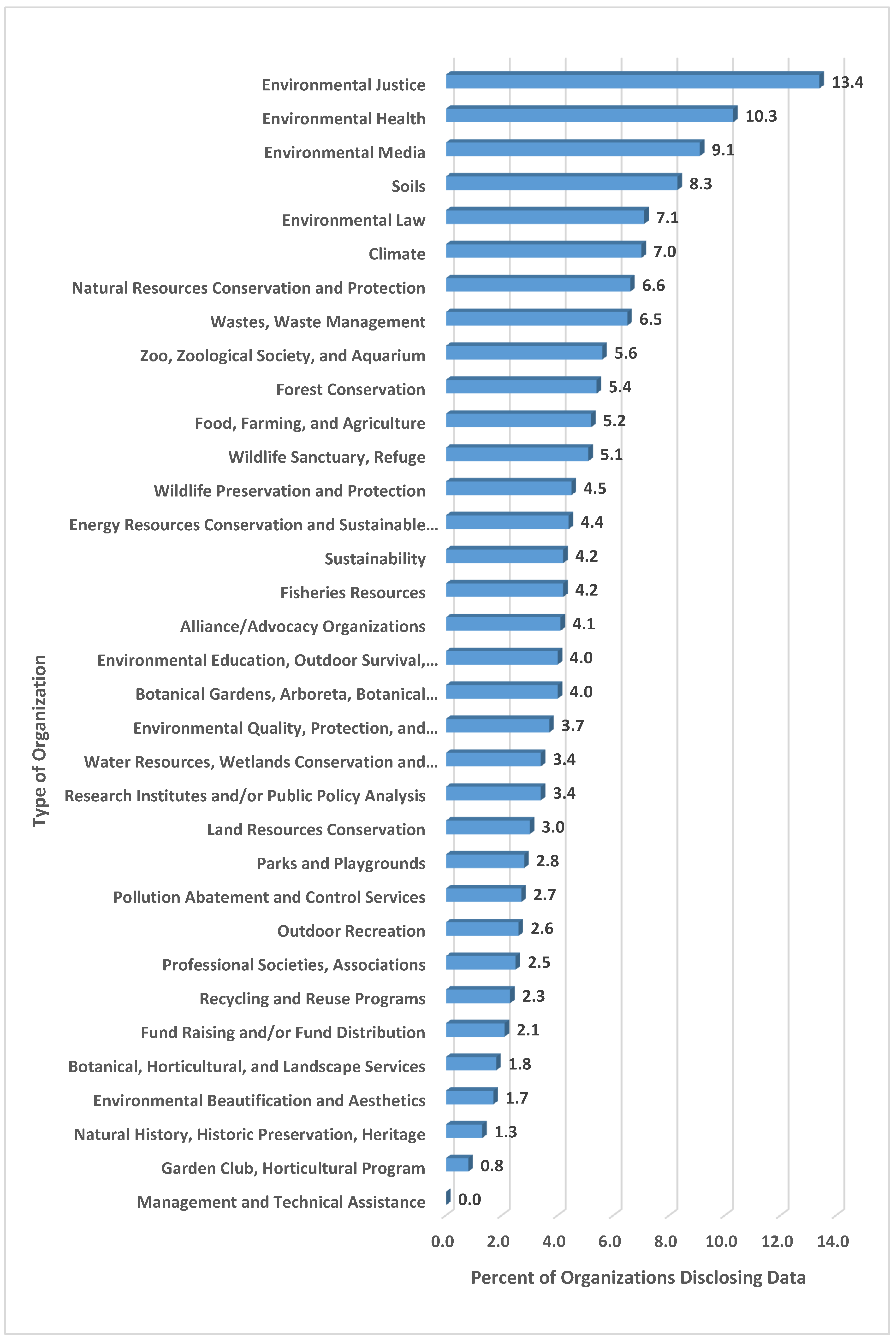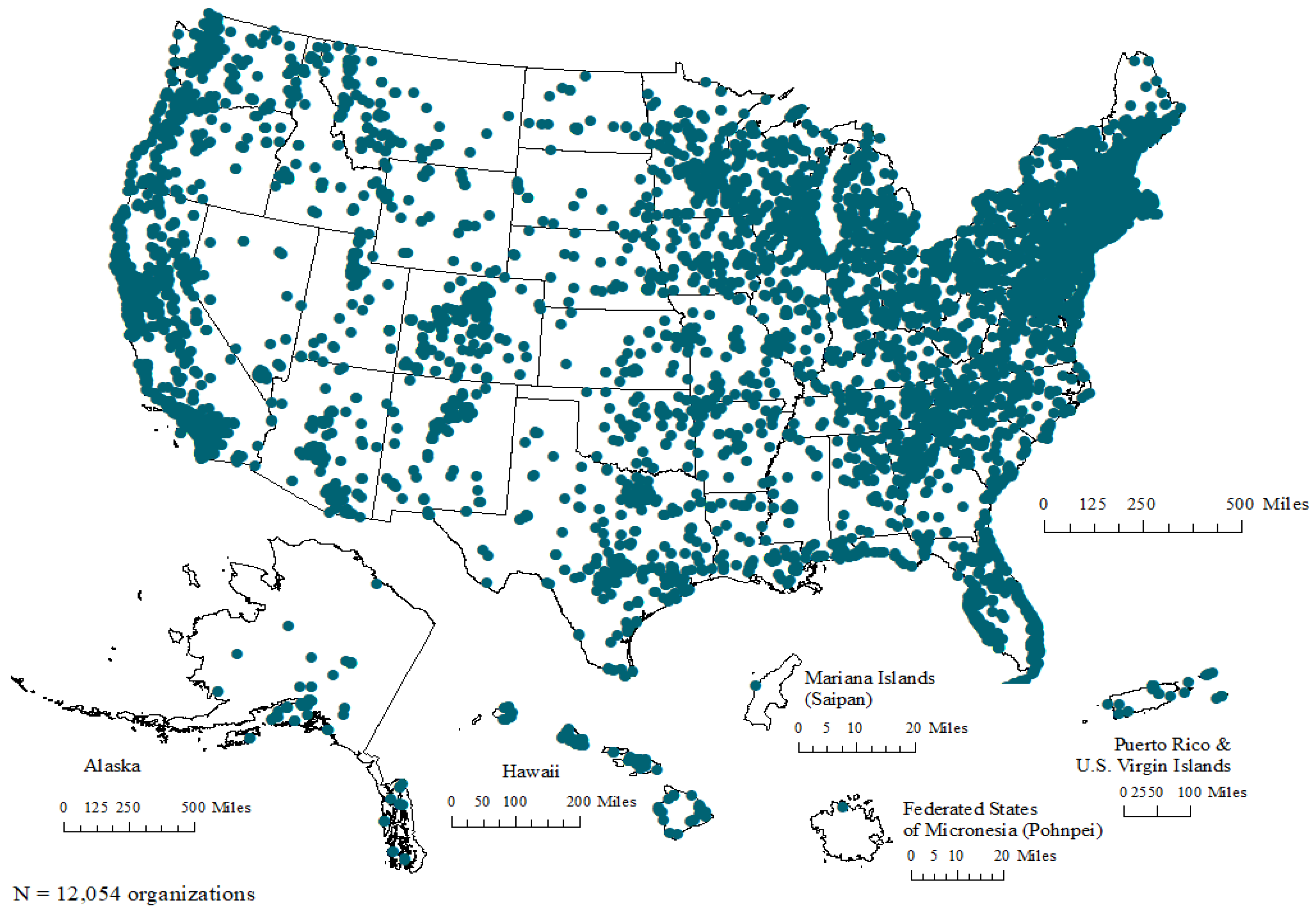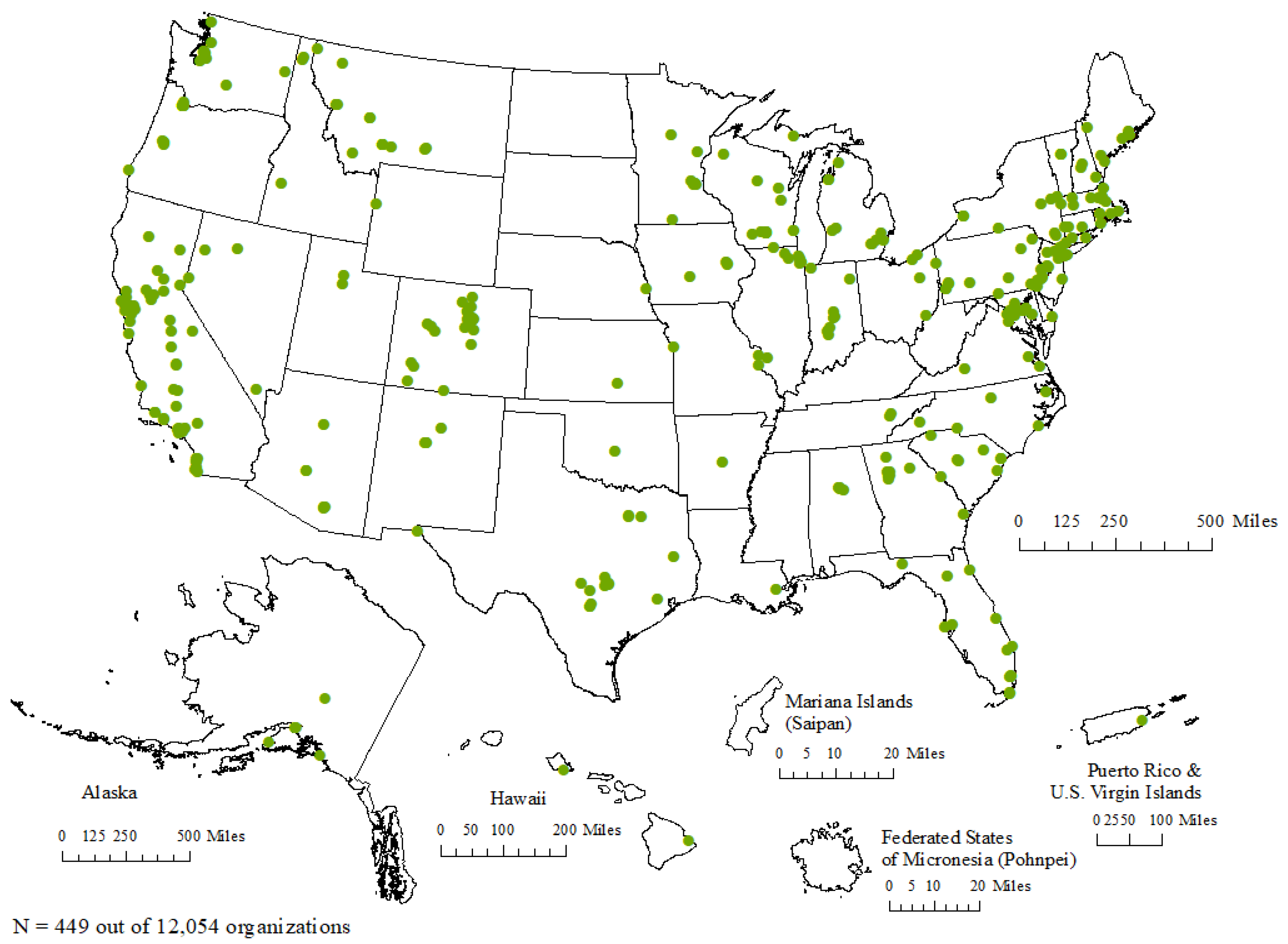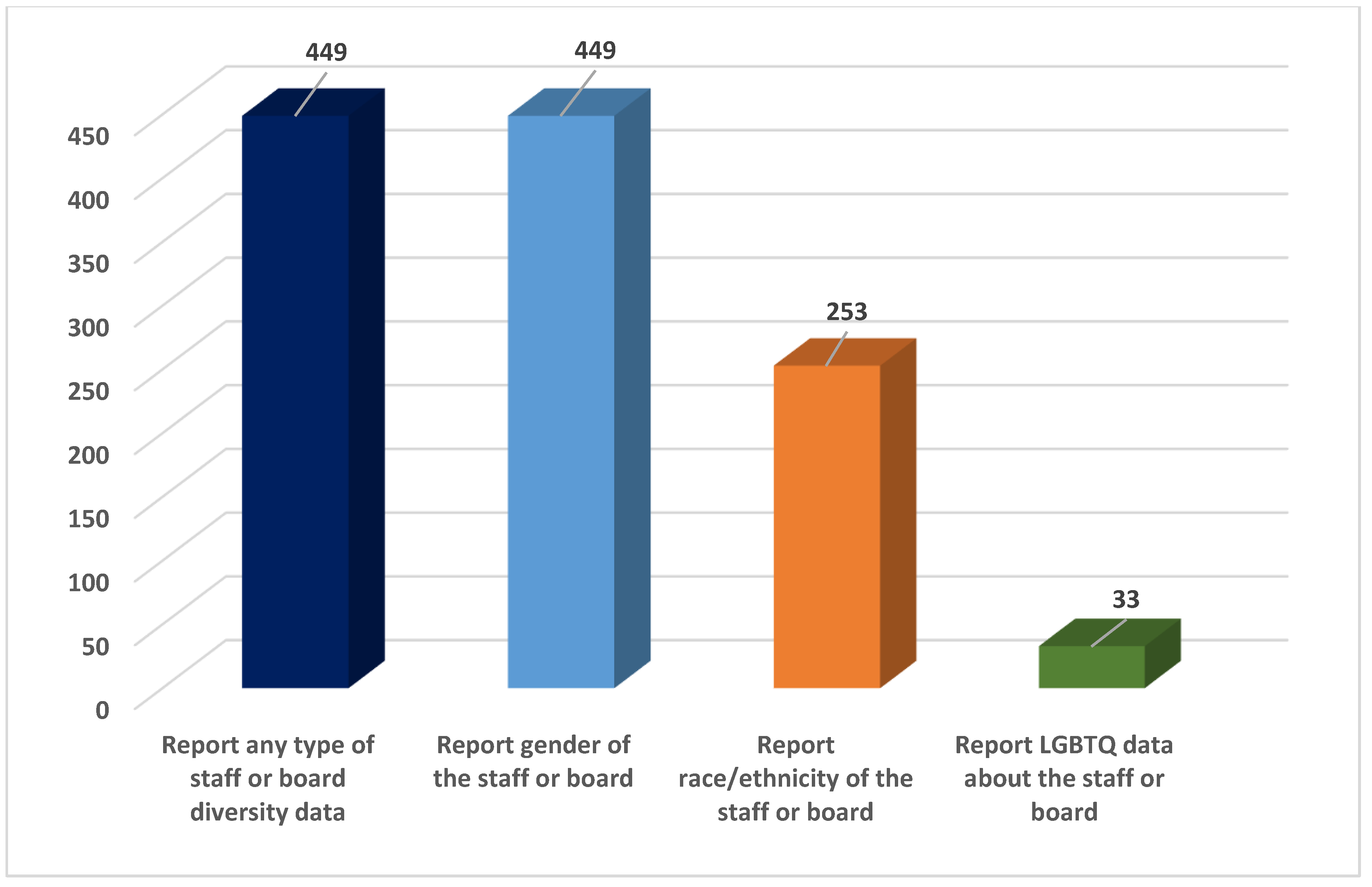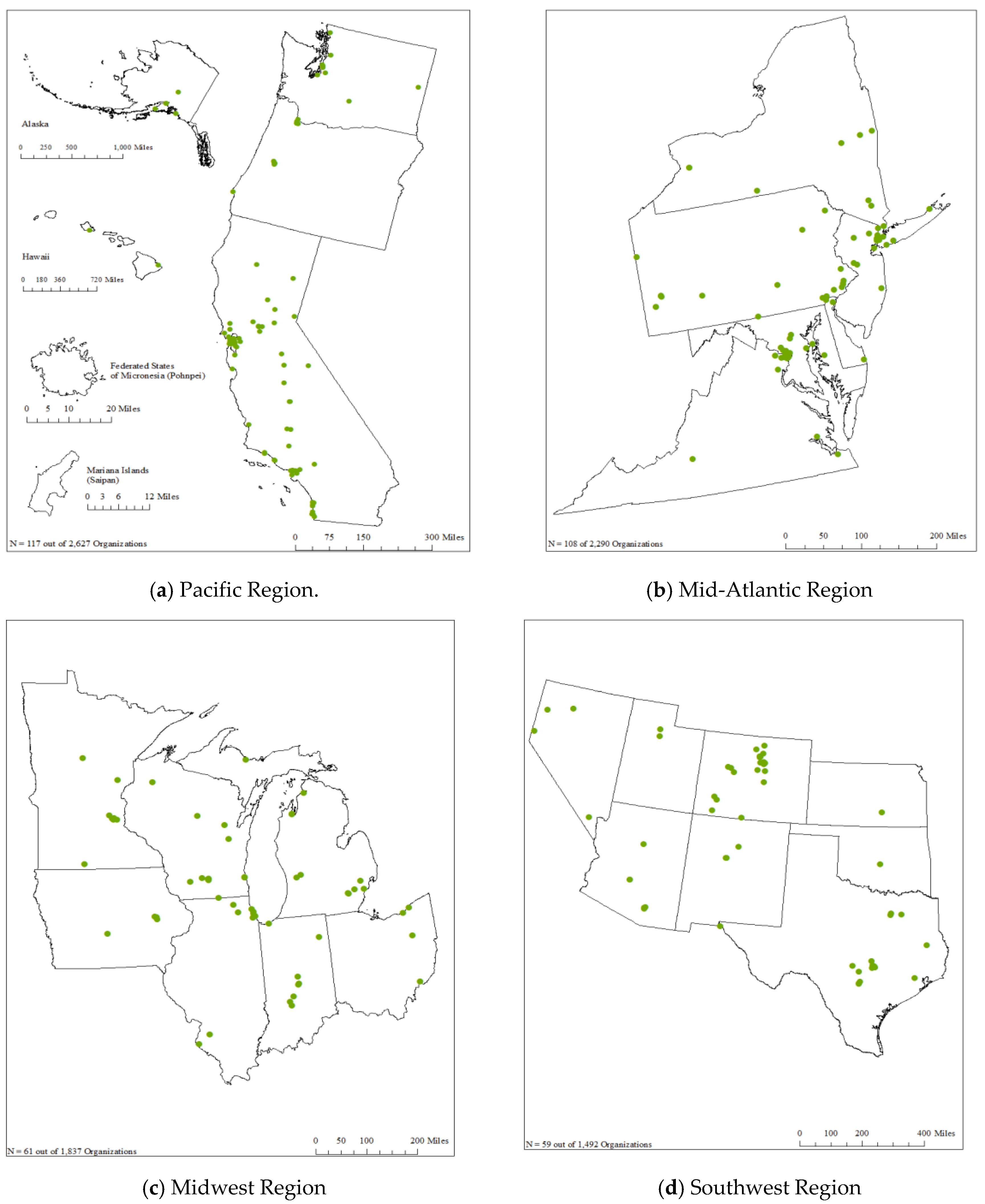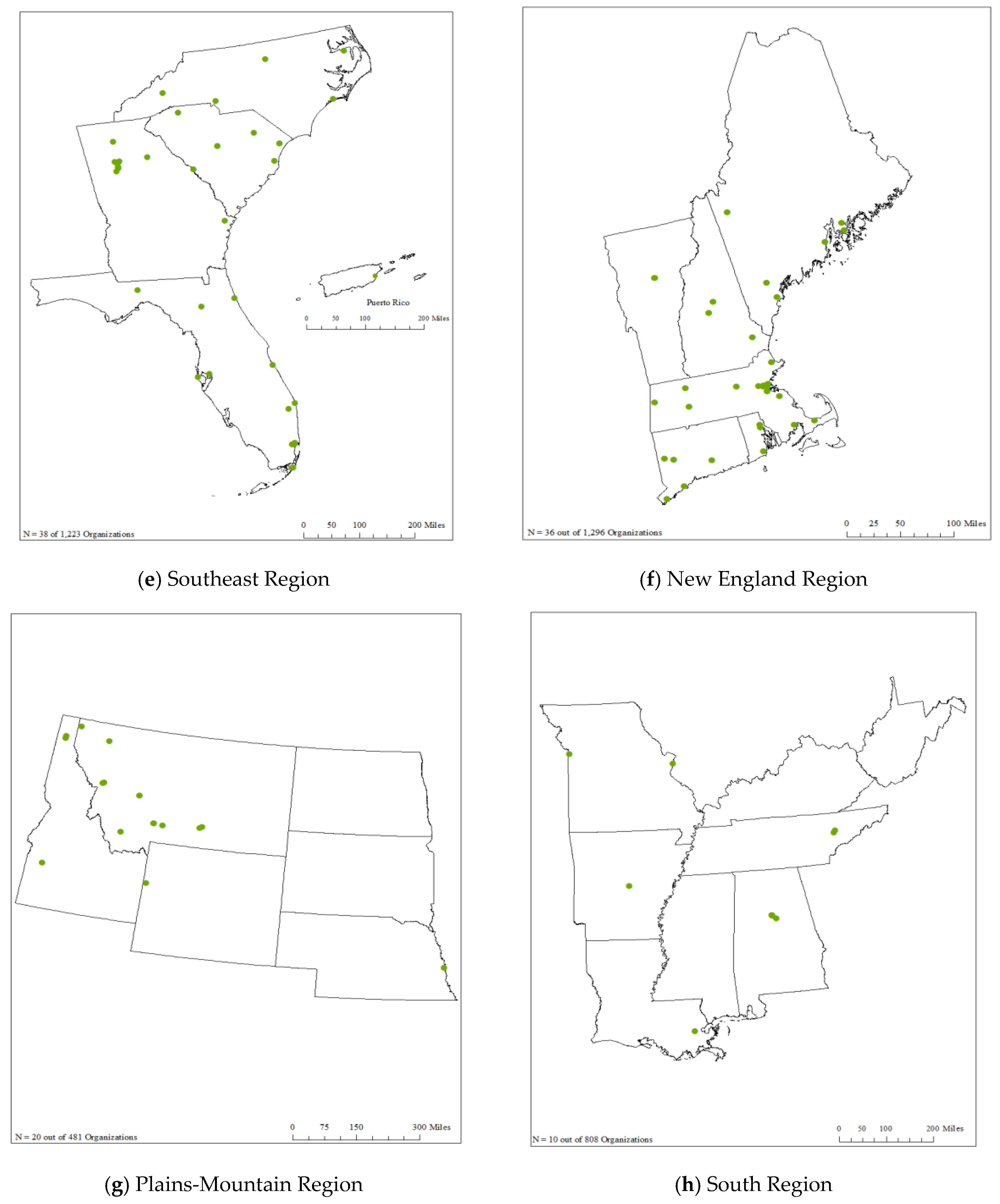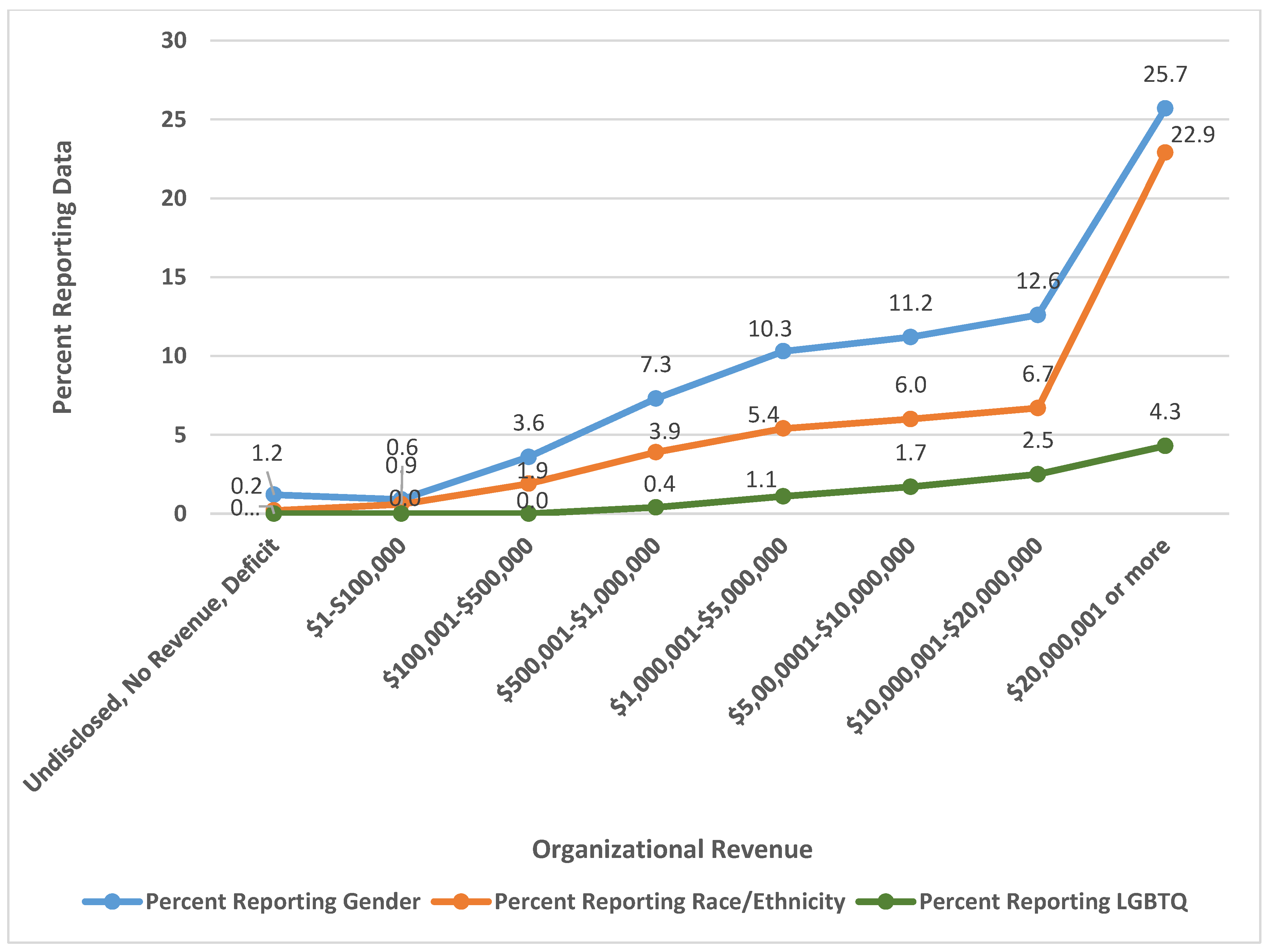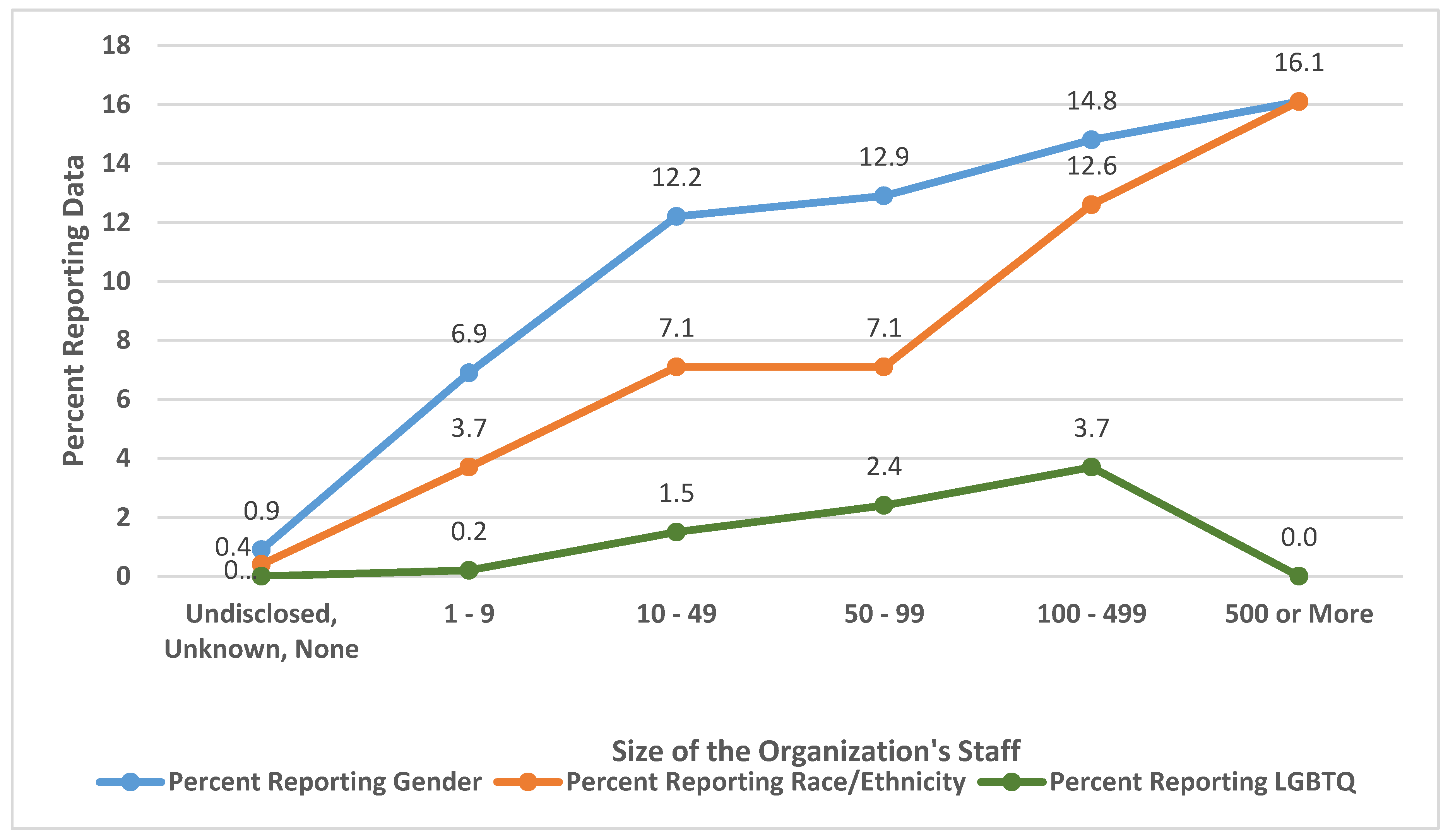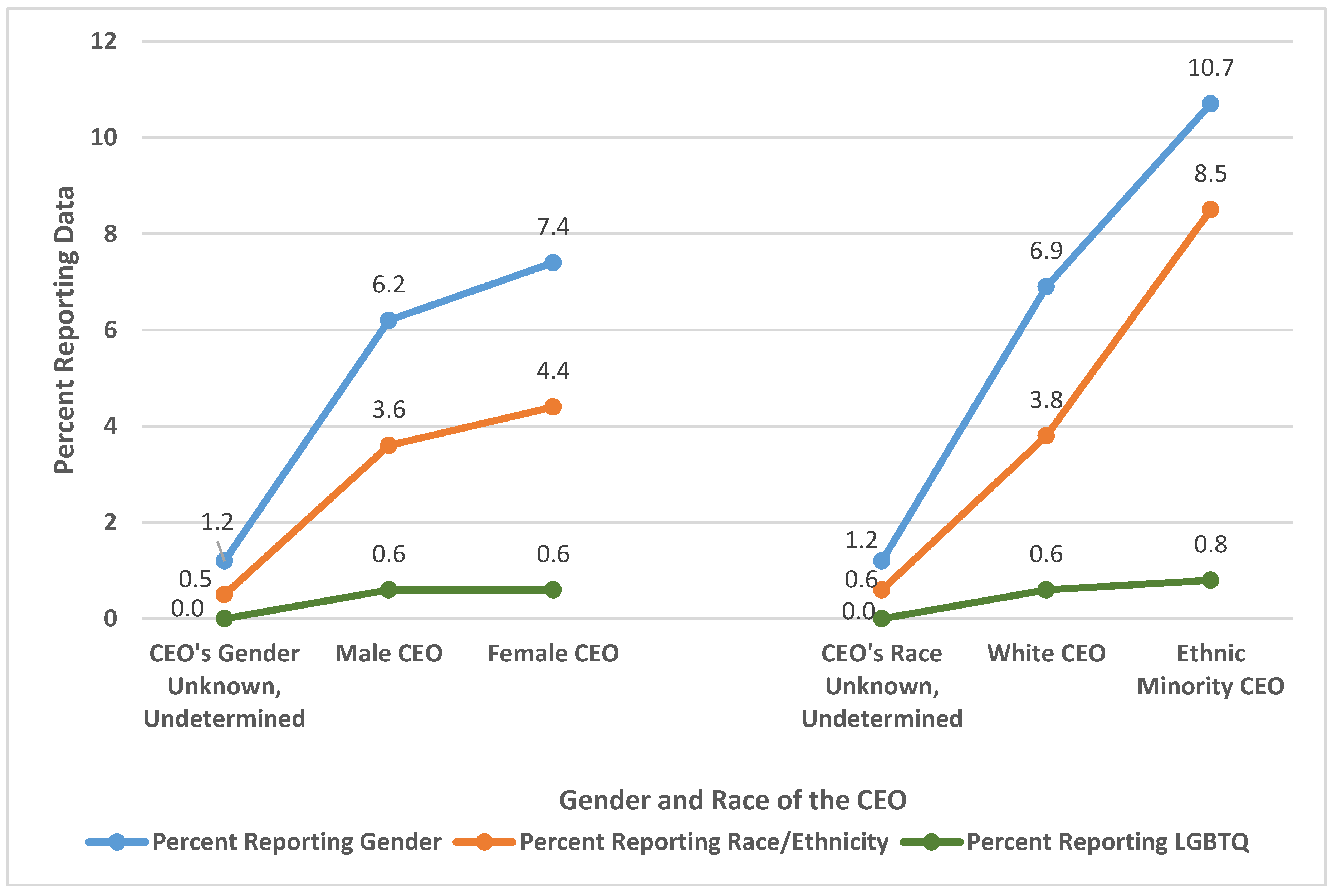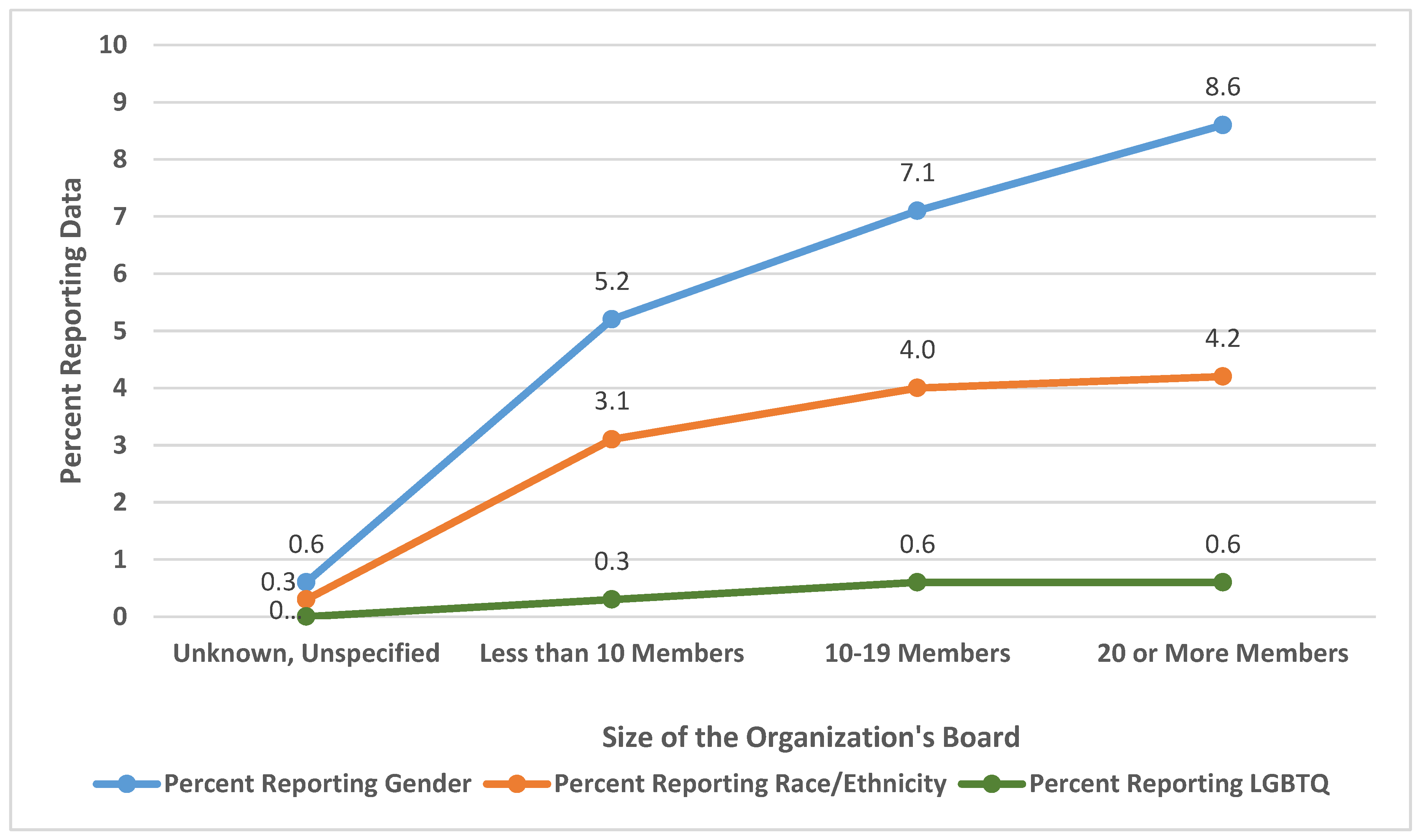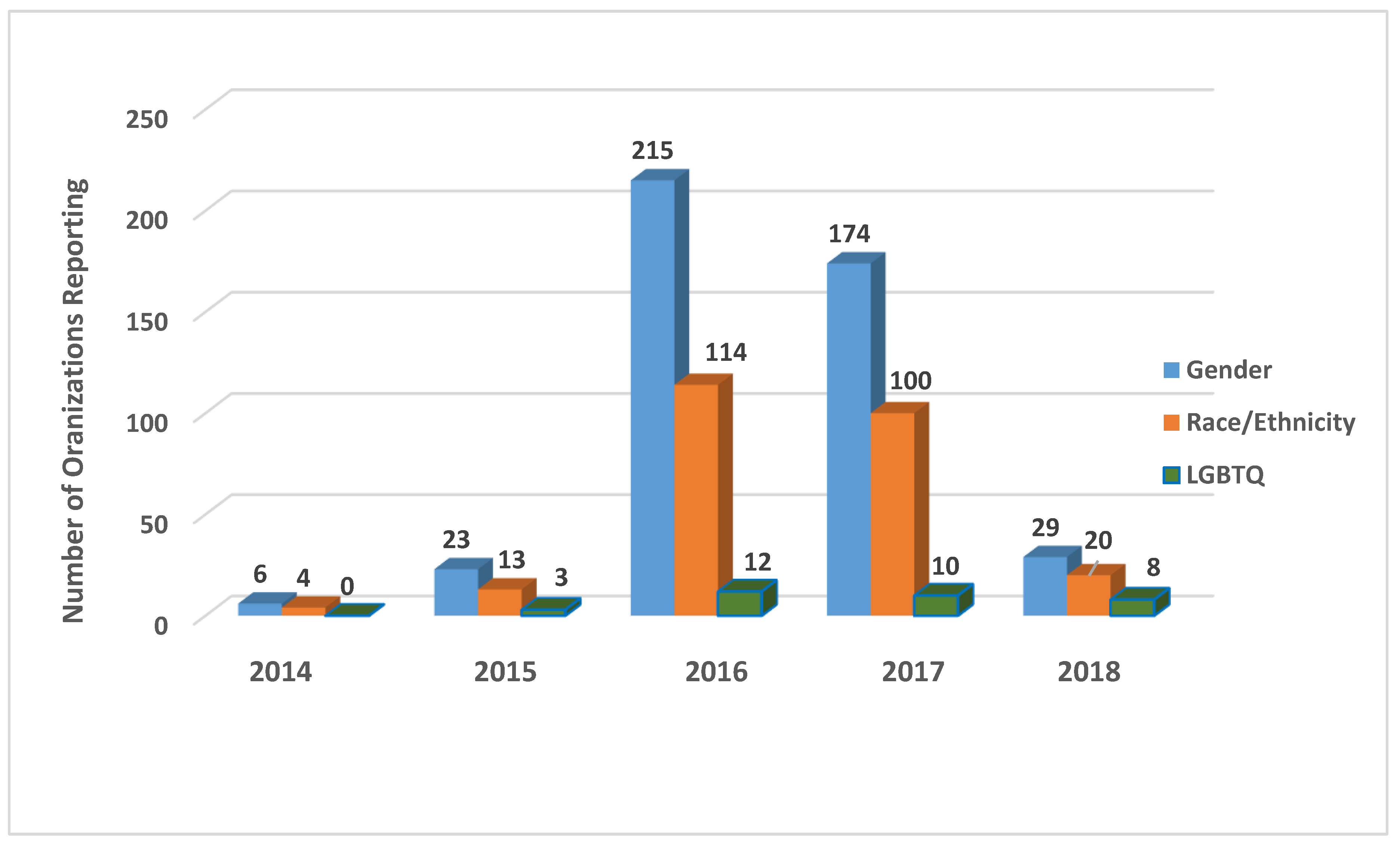Though U.S. environmental organizations have been in existence for nearly two centuries, it is still difficult to assess their level of racial diversity or find information on other demographic characteristics of these institutions. Despite the growing interest in the racial/ethnic and gender characteristics of environmental nonprofit staff, membership, and boards, few of the institutions publicly disclose these types of data. Hence, this paper seeks to examine an understudied aspect of the behavior of American environmental nonprofits—the disclosure of diversity information. The paper assesses the extent to which environmental institutions reveal data on the demographic characteristics of their staff and board. It will explore two main questions: Which organizations are most prone to reveal diversity data? What accounts for the variations in the levels of public reporting?
1.1. Historical Context
For most of the nineteenth century, the founders and members of environmental organizations were wealthy, white, and male. Though the organizations formulated policies that affected the public, at times, the leadership and membership of these entities went to great lengths to exclude rather than include the masses. This practice continued throughout the nineteenth century, even after wealthy white females became founders, members, and financial backers of the Appalachian Mountain Club, Sierra Club, National Audubon Society, and Save the Redwoods League [
1,
2,
3,
4,
5,
6].
The environmental organizations founded by white elites closed their doors to the white working-class well into the twentieth century. However, white working-class hunters and anglers founded a few organizations such as the Game Protective Association in 1902 in Wyoming and the Adirondack Game and Fish Protective Association in 1903 in New York [
1,
7]. Additionally, the Izaak Walton League, founded in Chicago in 1922, attracted a large following by appealing to the middle- and working-class outdoor recreationists [
1,
8,
9].
The tentative forays into engaging the white working-class notwithstanding, by and large, environmental organizations served whites and snubbed people of color. Though the historical record shows that people of color made essential contributions to environmental protection, environmentalists did not incorporate ethnic minorities into the environmental movement or institutions for a long time. For instance, scholars have documented the role people of color played in the construction and stewardship of national parks and forests and the experiences of ethnic minorities in these spaces [
1,
10,
11,
12]. Yet, people of color were excluded from the membership and workforce of most environmental organizations throughout the nineteenth century and for much of the twentieth century.
The lack of racial and ethnic diversity in environmental organizations went mostly unnoticed until the 1960s when academics and activists called attention to the overwhelming whiteness of the environmental movement and its workforce. Environmental leaders responded to the criticism by arguing that increasing the racial diversity of their staff or membership was not a part of their environmental mission. The question of racial diversity proved divisive within some organizations. For instance, though David Brower declared that the Sierra Club’s membership was open to people of “the four recognized colors” in 1959, the debate over whether the club should admit people of color into its membership dragged on for some time. During one discussion, attorney and former director of the club, Bestor Robinson, said: “Now wait a minute, this is not an integration club; this is a conservation club.” Robinson openly expressed a sentiment that many in the club shared. That is, racial inclusion was a social justice or civil rights issue, and these topics were not related to conservation. Since club members did not see a connection between social justice and the environment, they did not believe that increasing racial diversity in the organization was a project the institution should undertake. The resolution proposing that the club admit people of color failed to pass [
8].
Efforts to enhance the racial diversity of environmental organizations got a boost in 1990. That year, as preparations for the celebration of Earth Day 20 entered the final stages, people of color environmental justice activists published a letter in the New York Times claiming that few people of color worked in conservation nonprofits. Activists addressed the letter to the ten largest environmental organizations. The letter suggested that the establishments had discriminatory hiring practices. It also pointed to the benefits that enviros could reap if they worked more collaboratively with communities of color and hired more ethnic and racial minorities [
13].
Taken aback, conservation leaders struggled to explain the lack of people of color on their staff and vowed to increase the recruitment of ethnic and racial minorities into their institutions. In their explanations, environmental leaders educed narrative tropes that placed the blame for lack of involvement in environmental organizations squarely on the shoulders of people of color. Environmental leaders claimed that people of color (especially blacks) were not working in environmental organizations because they were not knowledgeable about the environment and lacked awareness about environmental issues. Conservationists also argued that people of color did not apply for jobs in their establishments and would not stay in such workplaces if hired. People of color were also said to desire salaries that were too high for the environmental organizations to afford to pay [
13,
14].
Leading environmentalists also made the distinction between concern for the environment, concern for social justice issues, and social responsibility. For instance, Fred Krupp, executive director of the Environmental Defense Fund, responded to the letter by arguing that minorities are “cause-oriented,” and are therefore attracted to issues such as discrimination and poverty rather than to environmental issues. But Krupp admitted that “the truth is that environmental groups have done a miserable job of reaching out to minorities.” Bob Norman, the National Audubon’s director of human resources, had a slightly different interpretation. He agreed that his organization had a terrible track record when it came to minority engagement, but he did not think that racism was a factor in hiring. Hence, he conceded that “We are not proud of our record—we are terrible.” However, he hastened to add, “I can’t believe it is racism. We are not getting the candidates from the minority community” [
13,
14].
In making their arguments, Krupp, Norman, and others who suggested that minorities were not interested in the environment, did not provide any evidence to support their claims. They were also ignoring studies of ethnic minority students and other people of color that show strong interest in working in the environmental workforce [
15,
16,
17]. By the time environmental justice activists penned the letter to the New York Times and the big green groups, people of color had formed grassroots environmental groups all over the country. The signatories to the letter were representatives of grassroots environmental groups that attracted the support of people of color, nonetheless, environmental leaders ignored that fact and framed people of color as disinterested nonparticipants in environmental affairs. About a year after publishing the letter, hundreds of environmental justice leaders converged on Washington D.C. for the First National People of Color Environmental Leadership Summit. The Principles of Environmental Justice were finalized at this gathering [
18].
People of color have demonstrated their interest in environmental issues and governance. Hundreds of environmental organizations, founded and administered by people of color, are currently in operation. Moreover, there continues to be a proliferation of outdoor recreation and wilderness-experience groups spearheaded by people of color [
10].
Consequently, studies continue to show that people of color are interested in working in environmental nonprofits [
10,
17,
19,
20,
21,
22]. People of color reject the disinterest thesis and argue, instead, that there are structural factors such as poor recruitment, discrimination, cultural isolation, lack of mentoring, and limited promotions that contribute to the low levels of ethnic minorities in the environmental workforce [
22].
The stereotypes used to describe people of color and their relationship to environmental organizations in 1990 are still in vogue today. Some environmental leaders gave similar explanations for the lack of racial diversity in their organizations in The State of Diversity in Environmental Institutions, a report released in 2014. Some of the leaders surveyed for the study felt that paying attention to racial diversity is incompatible with their environmental mission and could put the sustainability of their organizations in jeopardy [
22].
Why should environmental organizations care about workforce diversity? Environmental organizations need to pay attention to diversity, as it is a key driver of institutional effectiveness. Organizational research bears this out. Studies of corporate executives from around the world argue that diverse backgrounds, perspectives, and experiences in their workforce are crucial to innovation and the development of new ideas. Executives also contend that having a diverse and inclusive workplace is critical to recruiting, attracting, and retaining top talent [
23,
24]. Corporate executives are not the only ones making these arguments. Scholars contend that workplace diversity is a key factor in building cognitive growth, improving critical thinking, problem solving, and skills acquisition, and enhancing productivity [
25,
26,
27,
28,
29]. Others suggest that greater heterogeneity in the workplace can lead to more committed, better satisfied, and higher performing employees [
30].
There is another compelling reason why environmental organizations should be concerned about workplace diversity. The United States is undergoing a demographic shift that will affect the racial composition of the environmental workforce. The census projects that racial/ethnic minorities will constitute a majority of the United States population by 2045 [
31,
32].
Environmental issues are complex. Environmental organizations deal with local, national, and global issues that are best tackled by people who can solve problems at macro and micro scales. Excluding racial/ethnic minorities from the workforce means ignoring the skills, talents, insights, and experiences that exists in roughly 42% of the population today [
33]. This means that organization that want to be successful and influential, will have to recruit, hire, and retain minorities in their workforce. This is particularly true for organizations that want to hire talented people. Ergo, if environmentalists want to succeed in their mission to protect the environment and foster greater sustainability, they have to engage more people of color in meaningful ways since ethnic minorities currently comprise a rapidly growing segment of the population and will constitute a majority of it in a few decades.
Consequently, some environmental organizations have undertaken diversity initiatives, and the idea of increasing racial diversity has gained credence among environmental activists. This shift occurred because it is increasingly difficult for white environmental activists to claim that people of color (who have founded and joined environmental justice and climate justice organizations by the thousands) do not know or care about the environment.
1.2. Efforts to Promote the Reporting of Diversity Data
The paucity of demographic information about environmental nonprofits led to concerted efforts in 2014 to get the organizations to report such data. That year, diversity advocates from Green 2.0—a people-of-color-led, multiracial group of environmental professionals—teamed up with GuideStar, an organization that has a repository of financial and descriptive information for over 2.7 million nonprofits, to create a program to help environmental organizations provide their demographic data as they update their institution’s profile. The GuideStar system opened in October, shortly after The State of Diversity in Environmental Institutions was released [
34,
35]. The report called for greater inclusivity in environmental organizations, increased racial/ethnic diversity, and more sensitivity to and recognition of lesbian, gay, bisexual, transgender, and queer (LGBTQ) issues in the organizations. The document also called for increased public disclosure of demographic data by environmental organizations [
22].
This raises the question—why is transparency relevant in the environmental context? This paper is concerned with one aspect of transparency—the public release of demographic data. In this respect, transparency is an important element of diversity. It allows environmental organizations and third parties to identify baselines, set targets, reveal accomplishments, and measure progress on achieving goals. As the following excerpts make clear, leaders of the most powerful environmental organizations recognize that data gathering, tracking, and the release of diversity data as important elements of strengthening the environmental movement.
When the data-collection program debuted, several leaders of major environmental organizations opined about the need to increase racial and ethnic diversity in environmental nonprofits and pledged their support for the effort to increase tracking, disclosure, and transparency. Hence, Tripp Van Noppen, the president of Earthjustice, exclaimed: “Earthjustice continues to support this work, and we are looking forward to working with Green 2.0, GuideStar and other NGOs to gather information and develop real solutions to the under-representation of people of color in our organization and the environmental movement writ large.” David Yarnold, the president and chief executive officer of the National Audubon Society, supported more extensive tracking when he declared, “What matters is not our intentions or what we say—what matters is what we do. We need to operate differently, recruit differently and hire differently. Tracking progress is crucial” [
34].
The president of the Union of Concerned Scientists (UCS), Ken Kimmell, went a step further by arguing that there is an urgent need for comprehensive tracking. He said, “The Union of Concerned Scientists values data and transparency as critical tools for problem solving on any issue, diversity included. UCS has thus welcomed the call by Green 2.0, GuideStar and D5 to share diversity data, since tracking data at scale, is long overdue. We are committed to helping the partnership improve data collection and encourage all environmental organizations to be part of the solution so that the sector can rigorously assess how our efforts are making a difference” [
34].
The president and chief executive officer of The Nature Conservancy, Mark Tercek, also called for increased transparency as he argued that it was a critical step in closing what he saw as the diversity gap. He said, “The Nature Conservancy is pleased to support Green 2.0’s diversity data initiative. Increasing transparency is a critical step in closing the diversity gap in the environmental movement…” [
34].
Rhea Suh, president of the Natural Resources Defense Council (NRDC) and the only woman of color to head an enviro this large, issued this statement. “Transparency is a key driver of change, and that’s exactly what’s needed if we are to strengthen the environmental movement. Green 2.0 and Guidestar’s work is critical to helping us expand diversity among our staff…” [
34].
Michael Brune, executive director of the Sierra Club, also supported to the effort. He noted that “The Sierra Club is proud to have supported the Green 2.0 report and we look forward to participating in this next phase of collaboration with GuideStar…” The president/chief executive officer of the Defenders of Wildlife was also supportive of the initiative. He stated that “Defenders of Wildlife is a national, nonprofit membership organization dedicated to the protection of all native wild animals and plants in their natural communities. Our employees work in an environment that is inclusive and honors each of our unique perspectives and backgrounds. We believe that the conservation of biological diversity is best advanced by the contributions of people of diverse backgrounds, experiences, beliefs, and cultures...” [
34]. The leaders mentioned above vowed to disclose their organization’s demographic data on GuideStar and the people of color activists in Green 2.0 who spearheaded the effort were optimistic that change was afoot [
34].
Presidents of influential environmental grantmaking foundations also weighed in on the issue. The presidents of the Bullitt Foundation, Ford Foundation, Hewlett Foundation, Kresge Foundation, the Rockefeller Brothers Fund, and Wilburforce Foundation urged environmental organizations as well as funders to collect and release demographic data [
34,
36]. In 2015, Rip Rapson, President of the Kresge Foundation, reflected on the progress of the transparency campaign in op-ed in the San Francisco Chronicle. Rapson said, “I wish I could report that [this campaign] has lit a fire under environmental funders[.] [R] eporting is a modest first step in bringing genuine diversity to the mainstream environmental movement. But it is an indispensable one[.] ‘Closed clubs’ in any segment of our society should be relics of the distant past, and especially so in a movement with such high ideals for creating a better and more healthful world” [
37].
Hence, this paper assesses the outcomes of the efforts to increase transparency and reveal demographic data in environmental nonprofits. It will conduct a comprehensive assessment of the state of reporting since the launch of the transparency campaign. It will examine the extent to which organizations are revealing their diversity data, which ones are reporting, and how levels of reporting have changed from 2014 to 2018.

